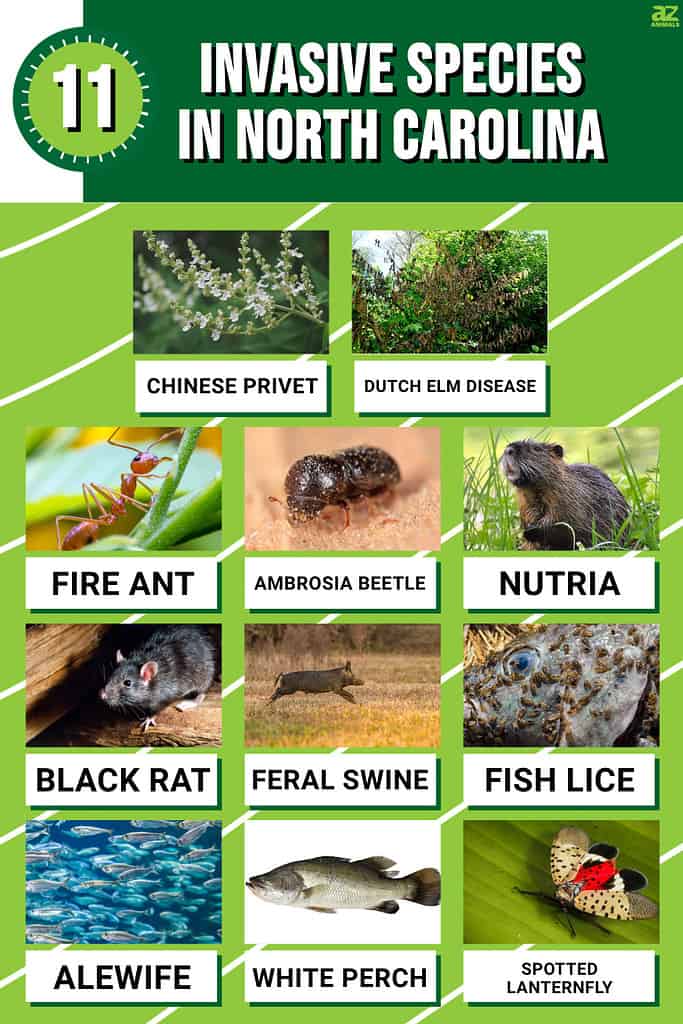
Welcome to the wild landscapes of North Carolina, where an intricate dance between native species and invaders unfolds. In the shadows of ancient forests and along the banks of tranquil rivers, a silent invasion takes place — one that threatens the delicate ecological balance. From the eerie whispers of voracious plants to the stealthy journeys of foreign creatures, we uncover the remarkable stories of adaptation and disruption. In this article, let’s unravel together the secrets of North Carolina’s battle against some invasive species.
1. Chinese Privet (Ligustrum sinense)
Chinese privet, a member of the Oleaceae family, is an evergreen shrub or small tree originating from China. Standing between 6 to 13 feet tall, it looks like a pretty addition to any garden. However, this species has posed a significant threat as an invasive plant in North Carolina. Its unchecked growth leads to the formation of impenetrable thickets, out-competing native vegetation.
During late spring, the Chinese privet blooms with its pungent flowers, emitting an odor that many find offensive. Besides, consuming Chinese privet berries and leaves may lead to symptoms such as upset stomach, headache, vomiting, diarrhea, tiredness, lower blood pressure, and a feeling of cold, damp skin. These effects may last for up to 48 to 72 hours.
Since its introduction as an ornamental plant, Chinese privet has spread extensively across thousands of acres in North Carolina. It’s aggressive growth and dense stands continue to choke out native flora. That makes it a significant concern for ecological balance and biodiversity.
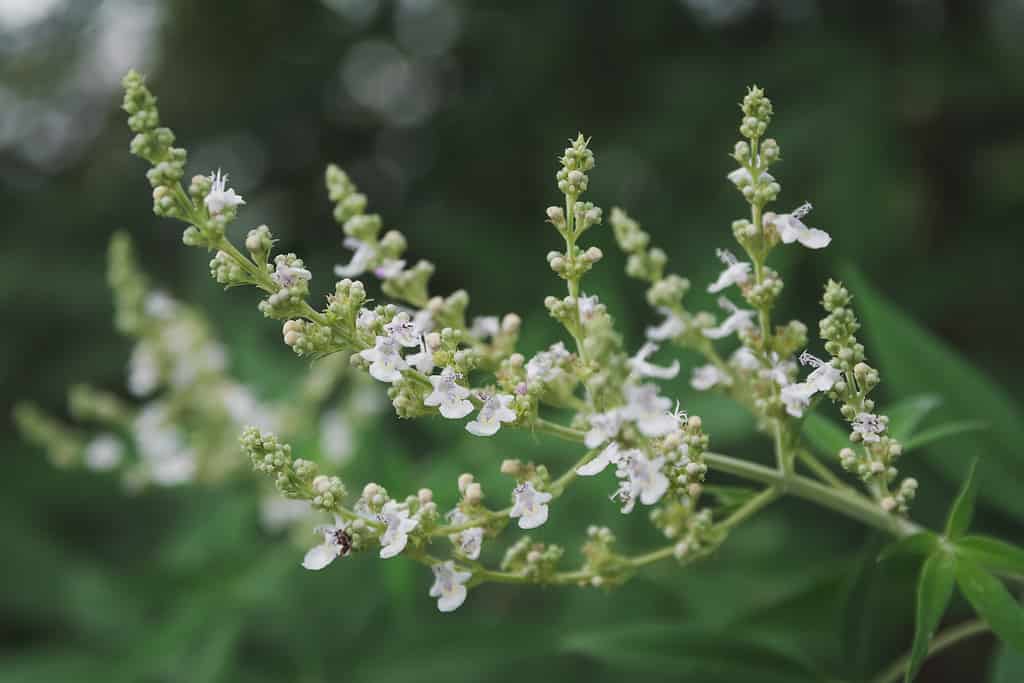
Since its introduction as an ornamental plant, Chinese privet has spread extensively across thousands of acres in North Carolina.
©YuRi Photolife/Shutterstock.com
2. Dutch Elm Disease (Ophiostoma ulmi)
The fungus responsible for Dutch elm disease came to the United States during the early 1900s. It made its way to North Carolina by 1962. The disease targets various species of majestic elm trees. It obstructs their vital water transport systems and ultimately leads to their demise. The primary culprits behind its transmission are several distinct types of tree bark beetles.
A gradual procession of leaf yellowing and withering commences from the tree’s branches, progressively advancing towards the tree’s central trunk. The swiftness at which the disease spreads downward hinges on the tree’s vulnerability. Infected trees may succumb to the illness within the same season of infection or face a prolonged decline spanning multiple years.
Once revered as the premier choice for urban”street” trees, elms have regrettably vanished from both cityscapes and wooded environments. An astonishing estimate suggests that the notorious “Dutch” elm disease has claimed the lives of over 100 million trees, leaving a void in their wake.

The fungus responsible for Dutch elm disease came to the United States during the early 1900s. It made its way to North Carolina by 1962.
©AJSTUDIO PHOTOGRAPHY/Shutterstock.com
3. Fire Ant (Solenopsis)
Approximately a century ago, two species of imported fire ants unknowingly arrived at the port of Mobile in Alabama, originating from South America. However, it was in 1952 that red imported fire ants were first encountered in North Carolina, concealed within ornamental nursery plants.
Fire ants, small reddish-brown insects, have established their presence throughout North Carolina. They are recognizable by their characteristic nesting mounds and the excruciating bites and stings they inflict. These ants employ their mandibles to grip their prey. Then, they immobilize them using the stinger located at the tip of their abdomen.
Their aggressive nature, coupled with their ability to bite multiple times, delivers venom that induces significant pain and poses a potential risk of allergic reactions. Additionally, fire ants can cause harm to fruits, berries, and young crops and inflict damage on electrical boxes. The ant mounds they construct also pose hazards to farm equipment.
Furthermore, the vulnerability of young and newborn animals to the venomous stings of fire ants cannot be understated. These invasive pests have the potential to disrupt ecosystems by displacing native ant species. They also destroy food sources essential for wildlife.
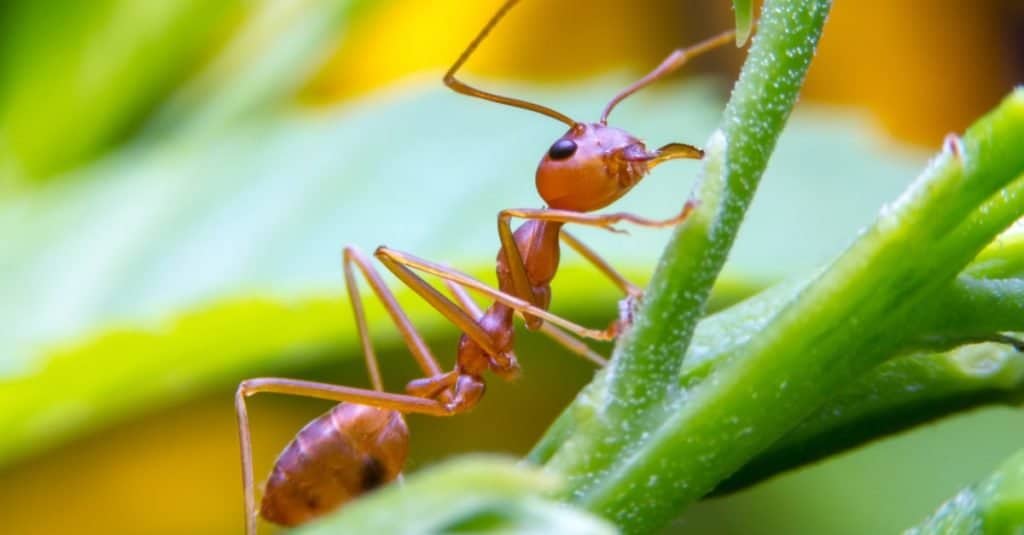
Fire ants, small reddish-brown insects, have established their presence throughout North Carolina.
©wnarong/Shutterstock.com
4. Ambrosia Beetle (Xyleborus spp.)
Around five decades ago, ambrosia beetles were brought over to the United States all the way from Asia. During the spring season in North Carolina, when the temperature starts to rise, these beetles become most active. These invasive insects specifically target trees that are stressed, dying, or recently afflicted by the disease.
These adult beetles have a slender, cylindrical body and range in size from 1/8 to 3/16 inches, displaying shades of reddish-brown to almost black. Their life cycle can consist of one or multiple generations in a year.
The ambrosia beetle carries and transmits a harmful fungus to the trees it infests. This leads to a devastating disease known as laurel wilt. It is currently understood that laurel wilt disease can be spread by various other species of ambrosia beetles as well. This disease has been observed to cause the death of 98 percent of the native host trees it infects.
In comparison to native species, non-native ambrosia beetles exhibit greater aggression and inflict more severe damage. These non-native species even attack seemingly healthy, living plants, resulting in their untimely demise.
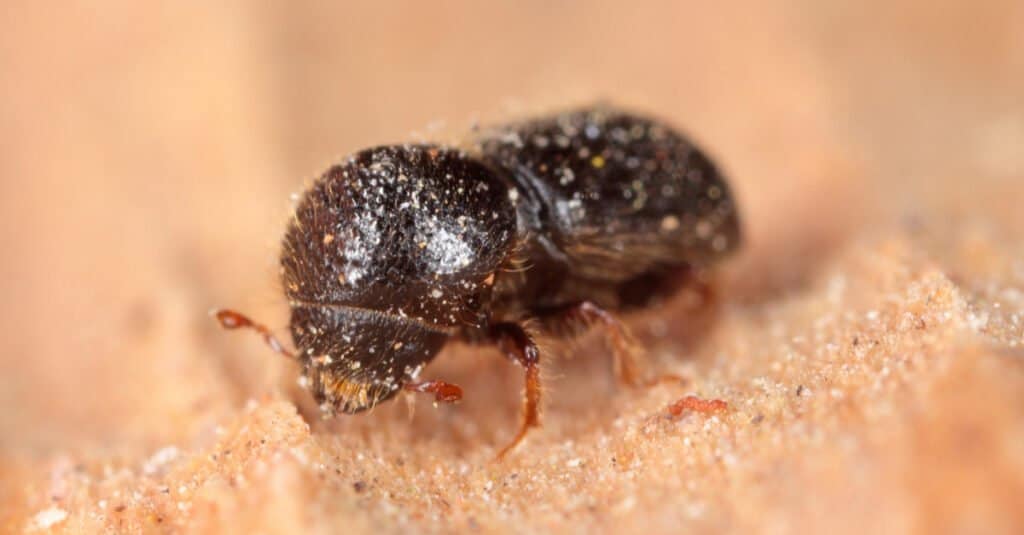
Ambrosia beetle is an invasive species that specifically target trees that are stressed, dying, or recently afflicted by the disease.
©Tomasz Klejdysz/Shutterstock.com
5. Nutria (Myocastor coypus)
The introduction of the nutria, a semi-aquatic rodent originally from South America to the United States in 1889, was driven by its prized fur. However, this species has turned into a major nuisance along the coast of North Carolina over the past century.
The nutria boasts distinctive features, sporting a dense, gray undercoat shielded by coarse, multi-colored hairs ranging from yellowish-brown to dark brown. Its prominent front teeth shine in a vibrant shade of orange. Its small eyes and ears are situated high on its head. Short legs support its stout body. Its remarkable hind feet, with impressive webs, can reach a length of nearly 6 inches.
Similar to beavers, nutria finds their habitats in swamps and marshes. Their never-ending appetite poses a threat to native wildlife as they compete for food resources. Native plants and agricultural crops alike fall victim to their voracious feeding habits, causing considerable problems for coastal farmers.
Furthermore, their burrowing tendencies lead to structural damage and safety hazards as they create dwellings in dams and other man-made water structures.
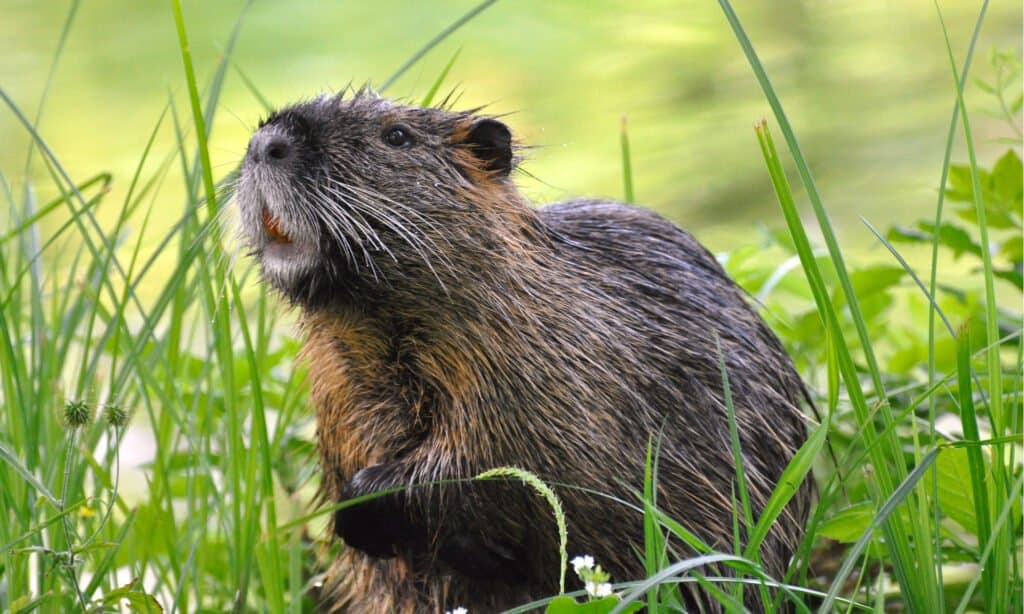
Nutria are known for their orange stained front teeth.
©Sonja Guijarro/Shutterstock.com
6. Black Rat (Rattus rattus)
North Carolina homeowners often encounter roof rats, an invasive species of rodent known for its adept climbing skills. Unfortunately, these creatures have a knack for wreaking havoc on households due to their ability to traverse various surfaces.
Originating from ships that arrived in America, black rats closely resemble their brown counterparts. They possess a slender physique, distinguishable by their comparatively larger ears and elongated tails. Despite their name, their coloration typically ranges from grayish-brown to black, with a lighter underside. They exhibit versatility in their habitats, thriving in forests, woodlands, and human-made structures.
Their voracious appetite leads them to consume and damage nearly any edible item, making them a threat to crops, plants, and especially seeds. In addition, the black rat has gained infamy for contributing to significant declines in bird populations, particularly on islands.

Black rats’ Their voracious appetite leads them to consume and damage nearly any edible item!
©Carlos Aranguiz/Shutterstock.com
7. Feral Swine (Sus scrofa)
Feral swine have become aCarolina’sestruction in North Carolina. In the last ten years, the number of wild pigs has expanded quickly, resulting in a surge in damages. Originally introduced in the 1500s as a food source for European settlers, they were later managed as a game species during the 1900s, contributing to their population boom.
Distinguishing feral swine from domestic hogs can be challenging. However, they typically have a leaner physique, thicker hides with coarse bristly hair, and longer tusks. Owing to significant crossbreeding, wild pigs exhibit a diverse array of hues and fur, featuring combinations of white, black, brown, and red.
The havoc wreaked by feral swine on North Carolina’s habitat has been unprecedented. These rooting animals extensively dig up plant life, devouring roots, and underground insects, resulting in an estimated annual damage cost of $1.5 billion throughout the United States.
Feral swine also pose a threat to ground-nesting bird species and young whitetail deer while carrying numerous diseases that they transmit to other wildlife, livestock, pets, and humans.
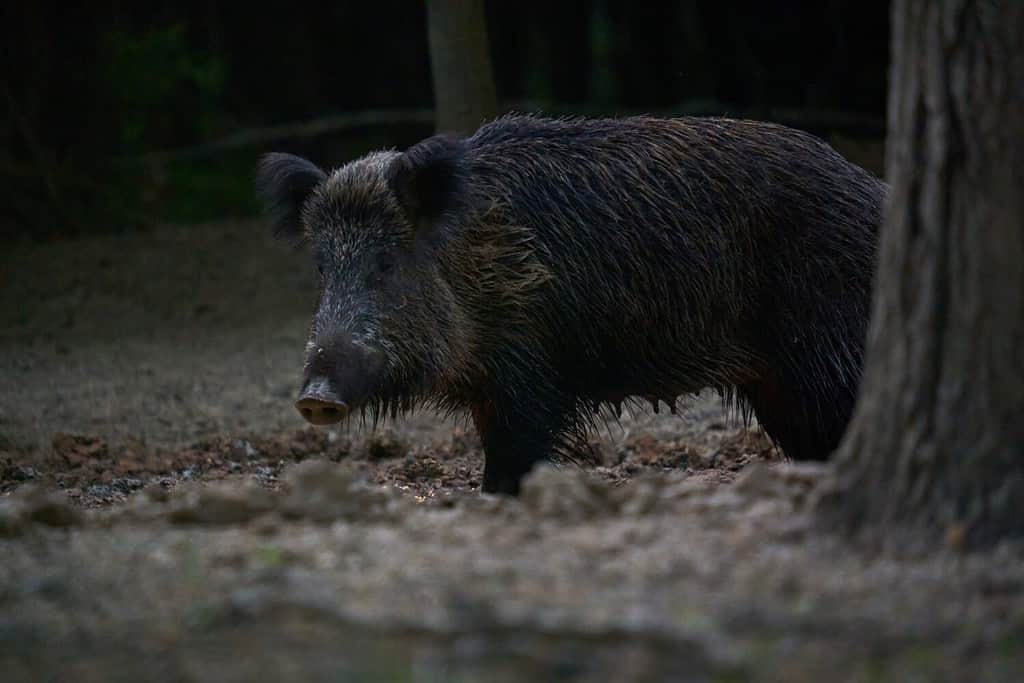
Feral swine have become a sign of destruction in North Carolina.
©Slatan/Shutterstock.com
8. Fish Lice (Salmincola californiensis)
In 2014, the discovery of gill lice on brook trout in Macon County, North Carolina, marked the beginning of a concerning trend. These tiny white crustaceans, known as external parasites, have since been observed in various locations. Their presence poses a significant threat to salmonid fisheries in North Carolina, potentially impacting fish growth, behavior, and overall survival.
The indigenous brook trout, specifically, experience the most significant impact of Carolina’s invasion. Factors contributing to this issue include the unsanctioned introduction of brown and rainbow trout into specific water bodies and the use of inadequately cleaned fishing equipment.
Gill lice attach themselves to the fish’s gills, impairing their ability to breathe. While some fish can tolerate small numbers of these parasites, the combination of additional stressors such as drought and elevated water temperatures poses a greater challenge for affected fish to survive.
To mitigate the adverse effects of gill lice infestations, efforts are needed to address illegal stocking practices and promote proper gear cleaning among anglers. These measures are crucial for preserving the health and sustainability of North Carolina’s salmonid populations in the face of this escalating threat.
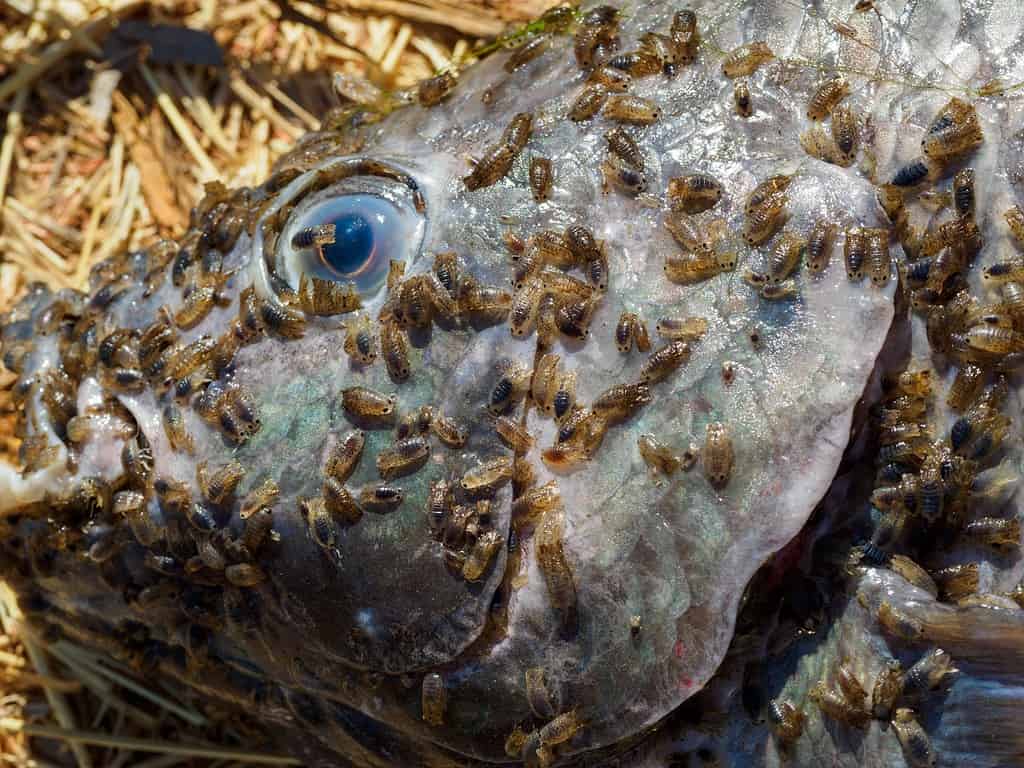
In 2014, the discovery of gill lice on brook trout in Macon County, North Carolina, marked the beginning of a concerning trend.
©O partime photo/Shutterstock.com
9. Alewife (Alosa pseudoharengus)
Alewife, a marine creature inhabiting oceans, displays remarkable migratory behavior by ascending freshwater rivers and streams for reproduction. However, when these populations become landlocked, they adapt to freshwater environments, completing their entire life cycle there, and are often classified as invasive.
Distinguished by their laterally compressed bodies and distinctly forked tails, alewives possess scales that exhibit a captivating interplay of metallic hues. They range from silver and brass to shades of grayish green with darker tones along their dorsal region. It is worth noting that alewives belong to the same genus as the closely related blueback herring, sharing the collective name of river herring.
While Pacific salmon heavily rely on alewives as a vital food source, there are drawbacks associated with this species. They significantly negatively impact various fish species as they consume the early developmental stages of native organisms like lake trout and yellow perch. Additionally, alewives compete with coregonines for zooplankton, further exacerbating the ecological consequences.

Alewives can adapt to freshwater environments, completing their entire life cycle there, and are often classified as invasive.
©MagicBones/Shutterstock.com
10. White Perch (Morone americana)
White perch are typically found in Piedmont reservoirs, where they have been intentionally introduced. Adult white perch exhibit a preference for habitats with silt, mud, and sandy bottoms. Unlike true perches, white perch belong to the temperate bass family. They measure approximately 7 to 12 inches in length, displaying dark green-brown to grayish-green backs, silver-white undersides, and silver sides.
During the spring, white perch undertake semi-anadromous behavior, migrating from brackish estuaries to freshwater rivers for spawning purposes.
White perch infestations have far-reaching consequences, causing recreational, economic, and ecological damage. One significant impact is their competition with native fish species, as they not only prey on native fish eggs but also fight for zooplankton, potentially leading to the emergence of algal blooms.
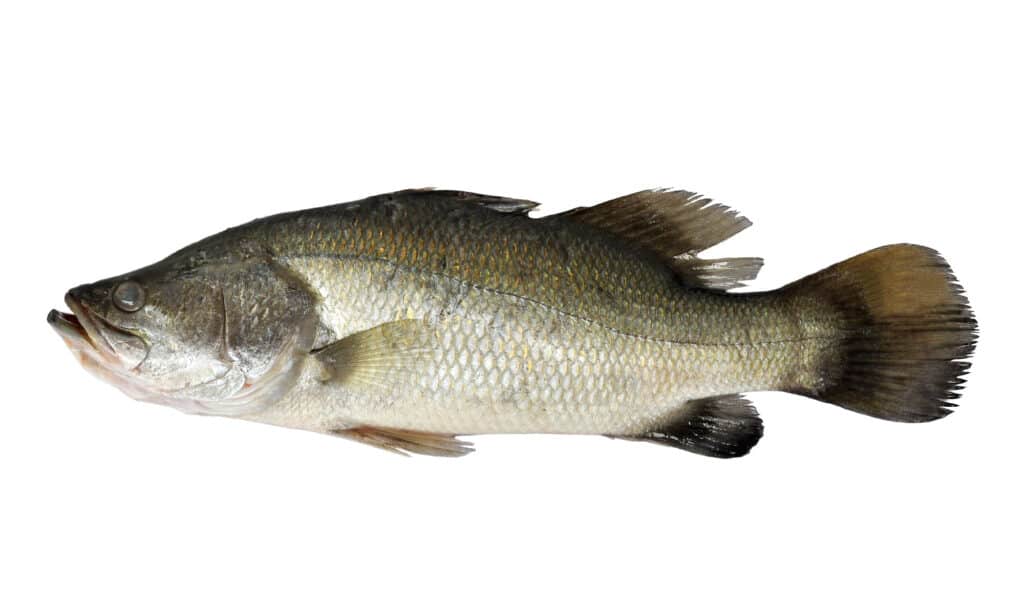
The presence of white perch infestations has far-reaching consequences, causing recreational, economic, and ecological damage.
©daagron/Shutterstock.com
11. Spotted Lanternfly (Lycorma delicatula)
The spread of the invasive species known as spotted lanternflies is greatly facilitated by human activities, specifically by transporting infested materials or items containing egg masses. It is believed that these pests entered North Carolina via shipments or vehicles. They tend to lay eggs on smooth outdoor surfaces such as lumber, landscaping materials, vehicles, or equipment.
The spotted lanternfly has a captivating appearance, with gray forewings adorned with varying-sized black spots and wing tips outlined in gray. Its hind wings display contrasting red and black patches with a white band. Black legs and head, along with a yellow abdomen with black bands, complete its striking look.
One of the most significant impacts of the spotted lanternfly is the extensive damage it causes to various plants, including trees, vines, crops, and other types of vegetation. Symptoms of infestation include the presence of oozing sap, wilting, leaf curling, and overall plant deterioration.
Furthermore, the feeding activity of spotted lanternflies leads to the secretion of a sugary substance called honeydew, which, in turn, promotes the growth of black sooty mold.
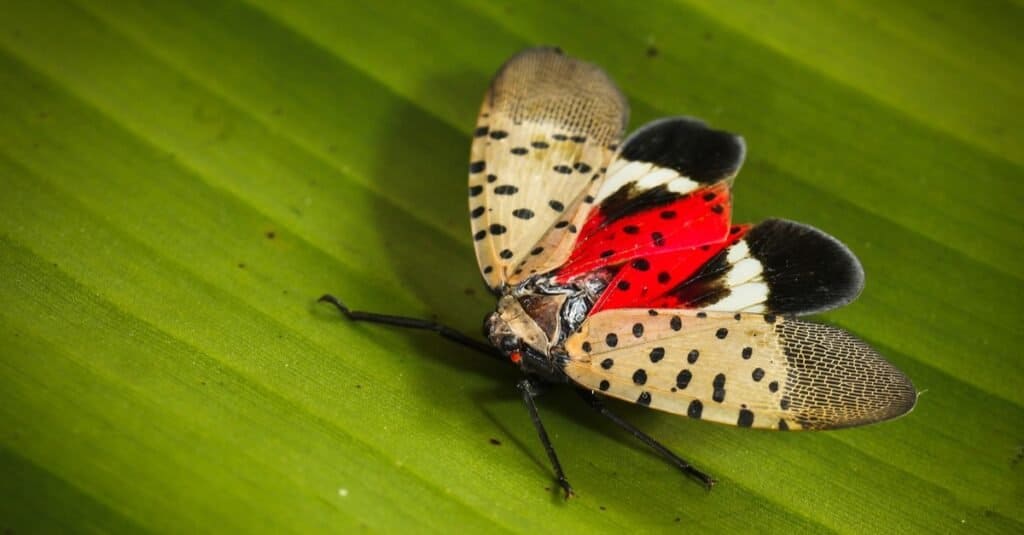
One of the most significant impacts of the spotted lanternfly is the extensive damage it causes to various plants.
©vm2002/Shutterstock.com
Summary of 11 Invasive Species in North Carolina
| Invasive Species | Damage | |
|---|---|---|
| 1 | Chinese Privet | Unchecked growth leads to the formation of impenetrable thickets |
| 2 | Dutch Elm Disease | Kills beautiful elm trees |
| 3 | Fire Ant | Ability to bite multiple times inflict pain, mounds damage farms |
| 4 | Ambrosia Beetle | Kill native trees |
| 5 | Nutria | Eat native plants, burrows cause structural damage to buildings and roads |
| 6 | Black Rat | Their appetites have caused damage to crops and they eat seeds usually eaten by birds |
| 7 | Feral Swine | Their sheer numbers and rooting behavior have caused $1.5 billion in damage in the U.S. |
| 8 | Fish Lice | Kill brook trout and other fish |
| 9 | Alewife | If they become landlocked after migration, they consume and wipe out populations of fish |
| 10 | White Perch | Compete with native fish |
| 11 | Spotted Lanternfly | Feeding activity produces honeydew – which leads to production of mold |
The photo featured at the top of this post is © Mircea Costina/Shutterstock.com
Thank you for reading! Have some feedback for us? Contact the AZ Animals editorial team.






